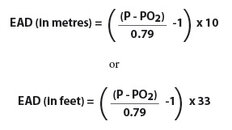Big Stig
Registered
Trying to get an understanding of pros V cons of recreational rebreathers such as the Poseidon Mk6
ref comments on extended dive time.
Is this primarily due to not running low on air.
Or due to the better control of PP02 in the rebreather does it actually increase your NDL times??
Eg on Air at 110ft I have 16mins NDL
on 32% nitrox I can extend that to 20 mins NDL.
what would the NDL time be on a Rebreather such as the mark 6.??
also in regards to the hollis hybrid one that uses just one tank of Nitrox assuming we see it retail eventually would that be any different to either OC or the Mk6
will the rebreather reduce the amount of Nitrogen build up in my system ??
Obviously still a rookie by these questions.
Thanks for info.
Cheers SteveP
ref comments on extended dive time.
Is this primarily due to not running low on air.
Or due to the better control of PP02 in the rebreather does it actually increase your NDL times??
Eg on Air at 110ft I have 16mins NDL
on 32% nitrox I can extend that to 20 mins NDL.
what would the NDL time be on a Rebreather such as the mark 6.??
also in regards to the hollis hybrid one that uses just one tank of Nitrox assuming we see it retail eventually would that be any different to either OC or the Mk6
will the rebreather reduce the amount of Nitrogen build up in my system ??
Obviously still a rookie by these questions.
Thanks for info.
Cheers SteveP





